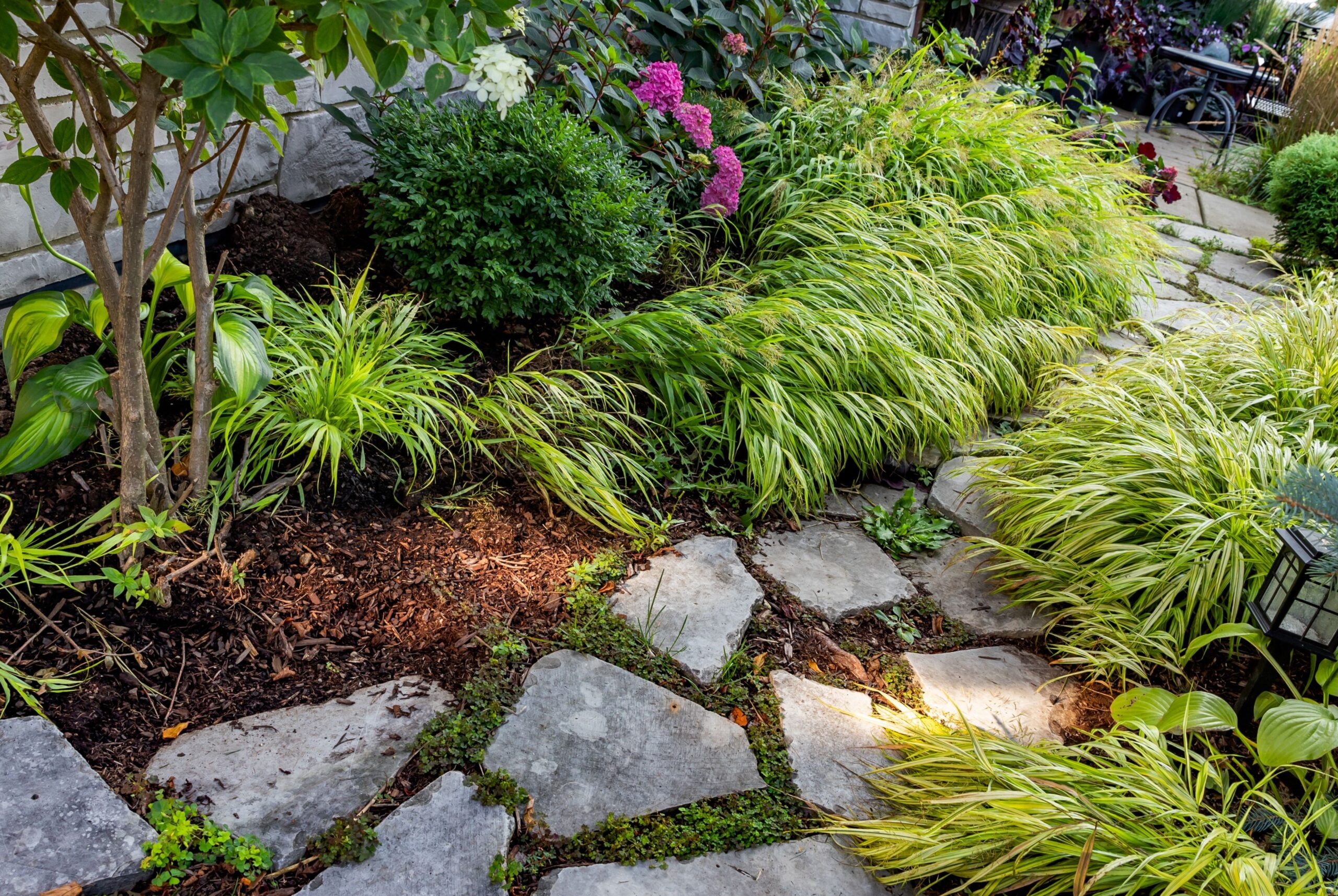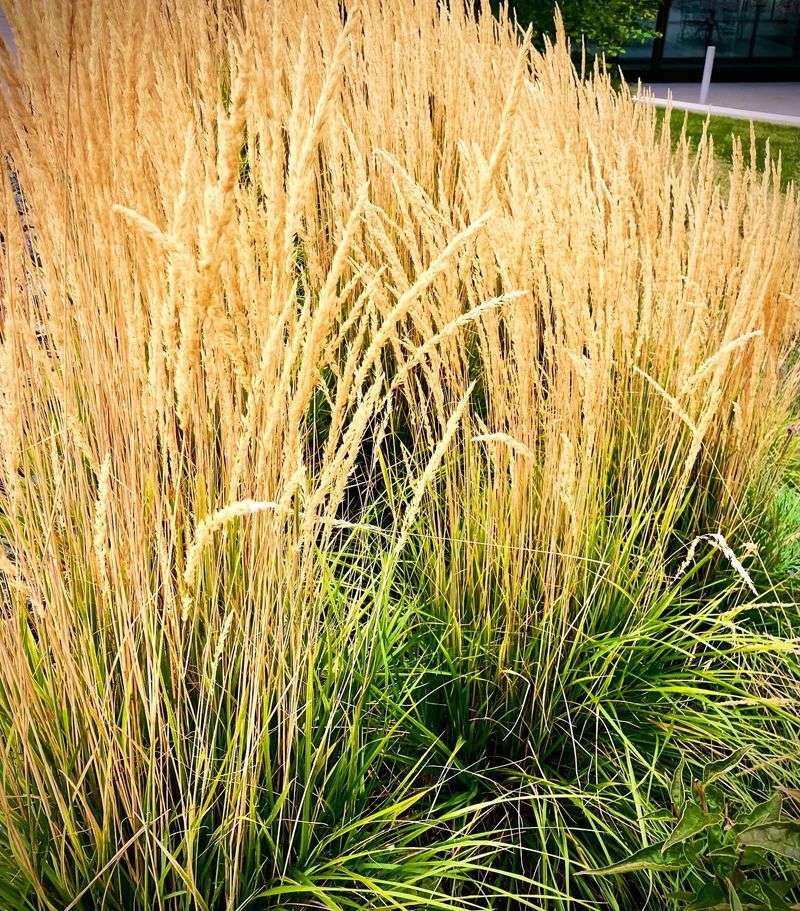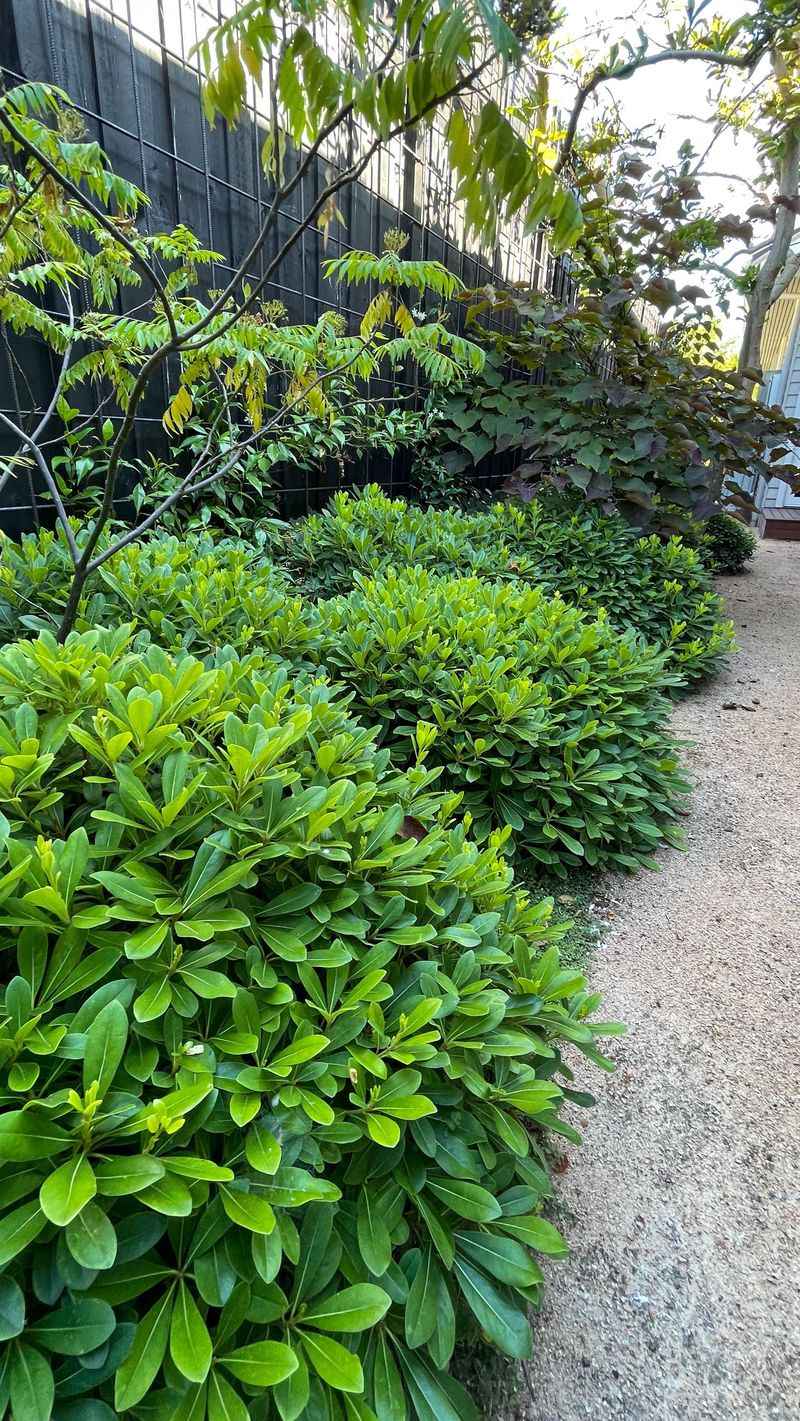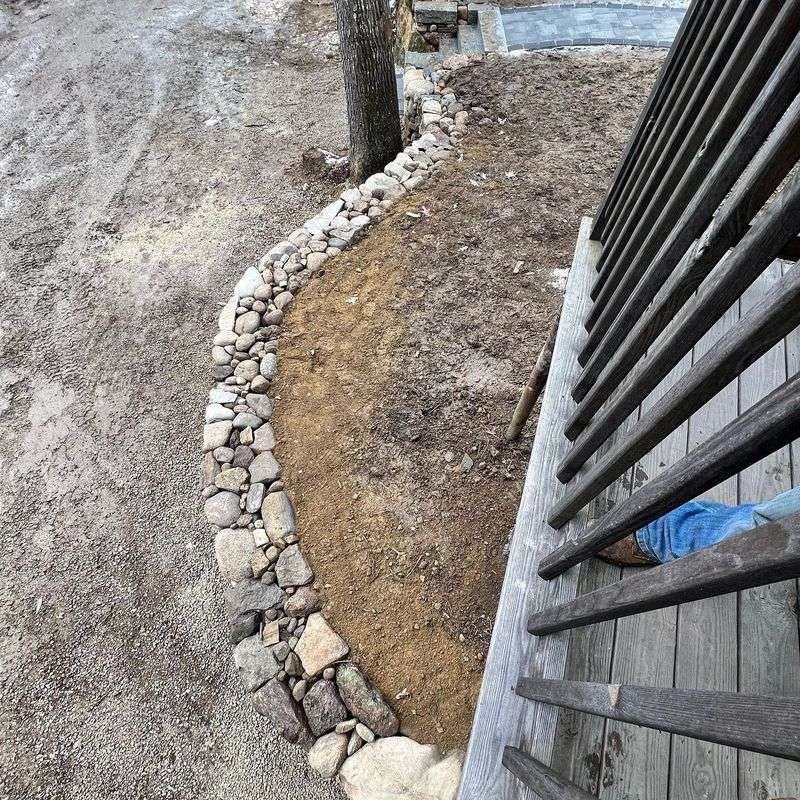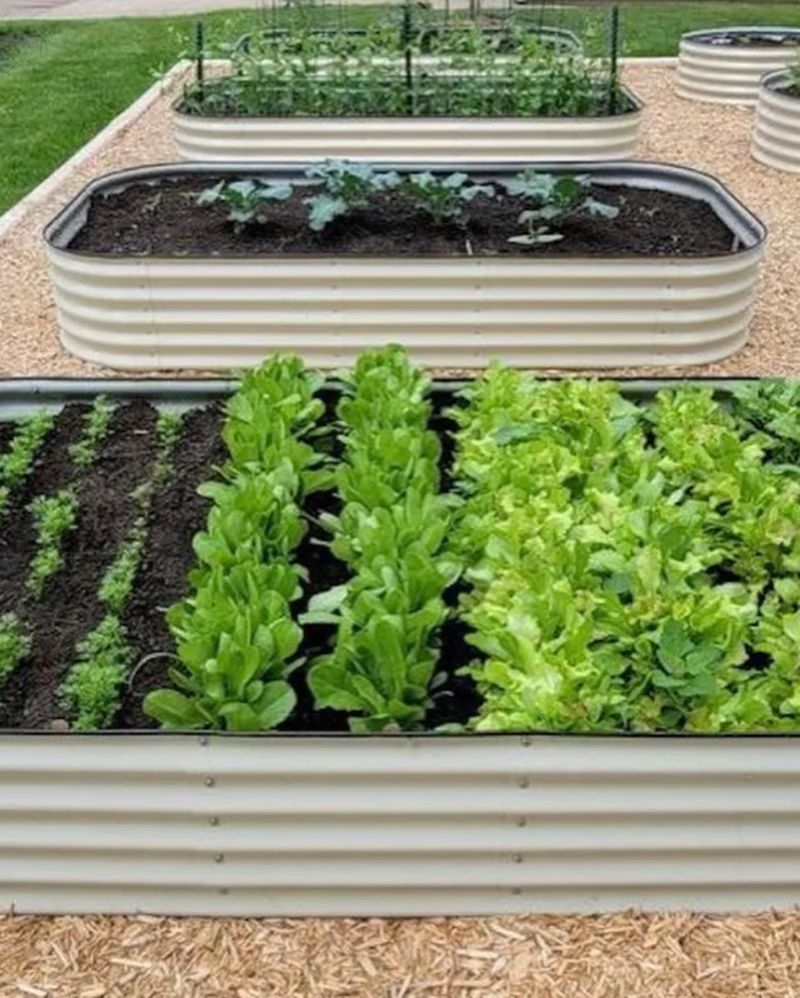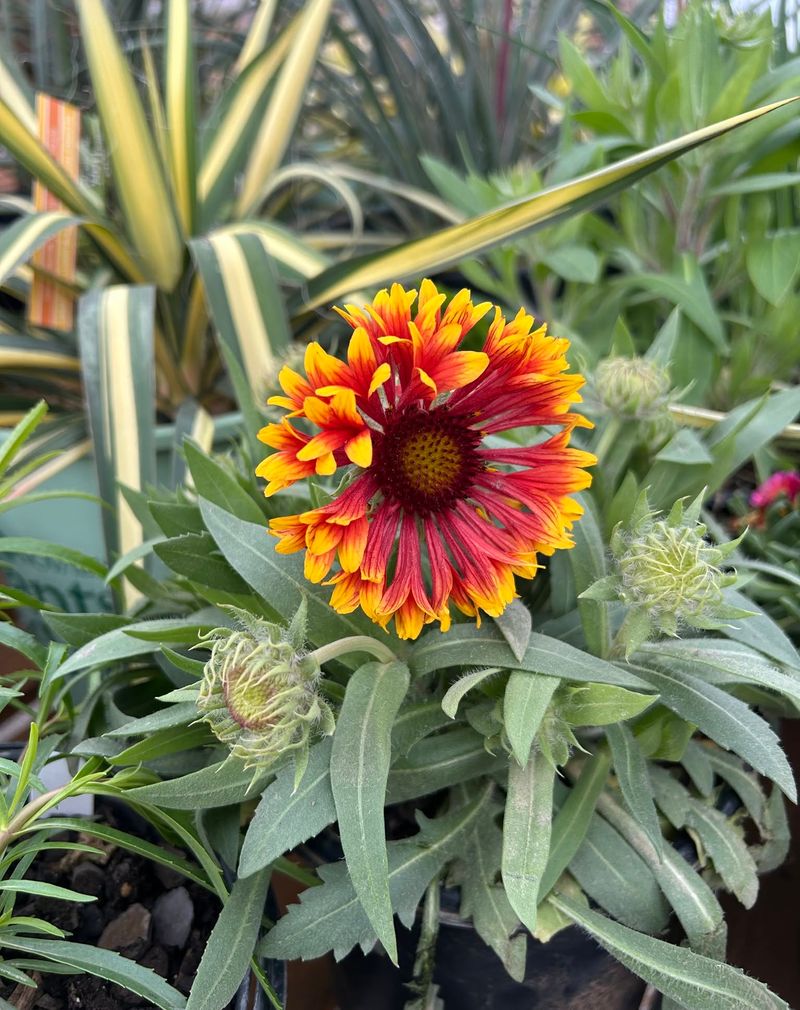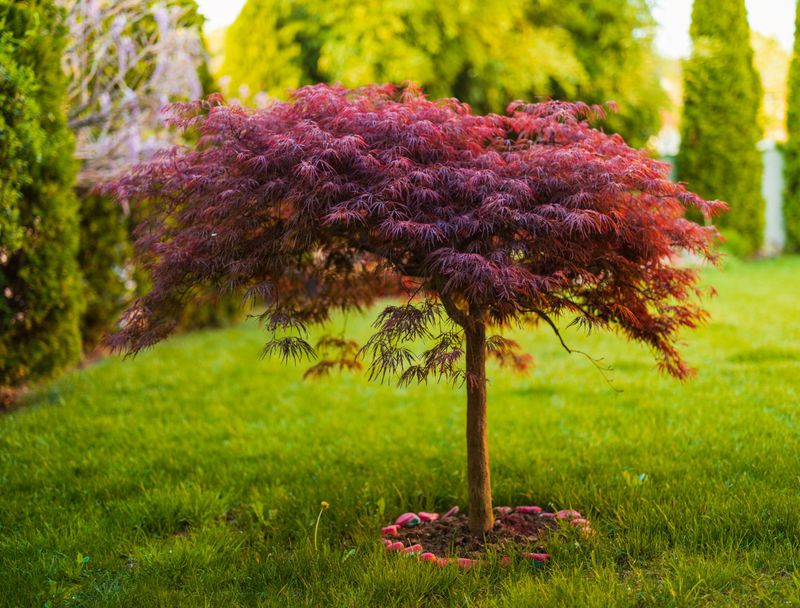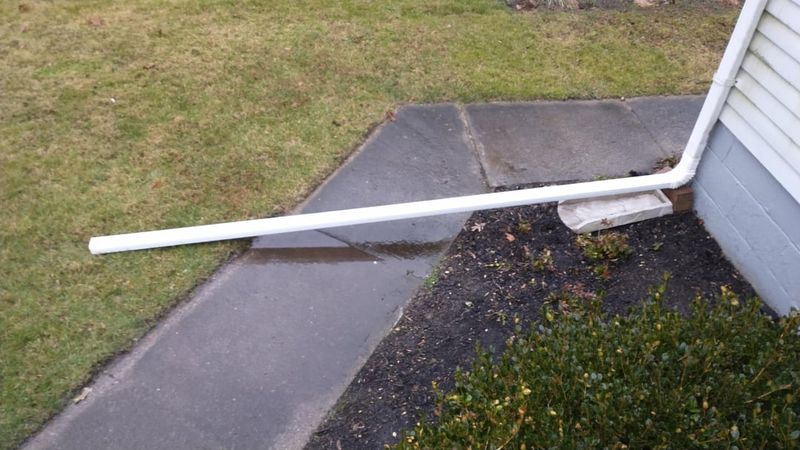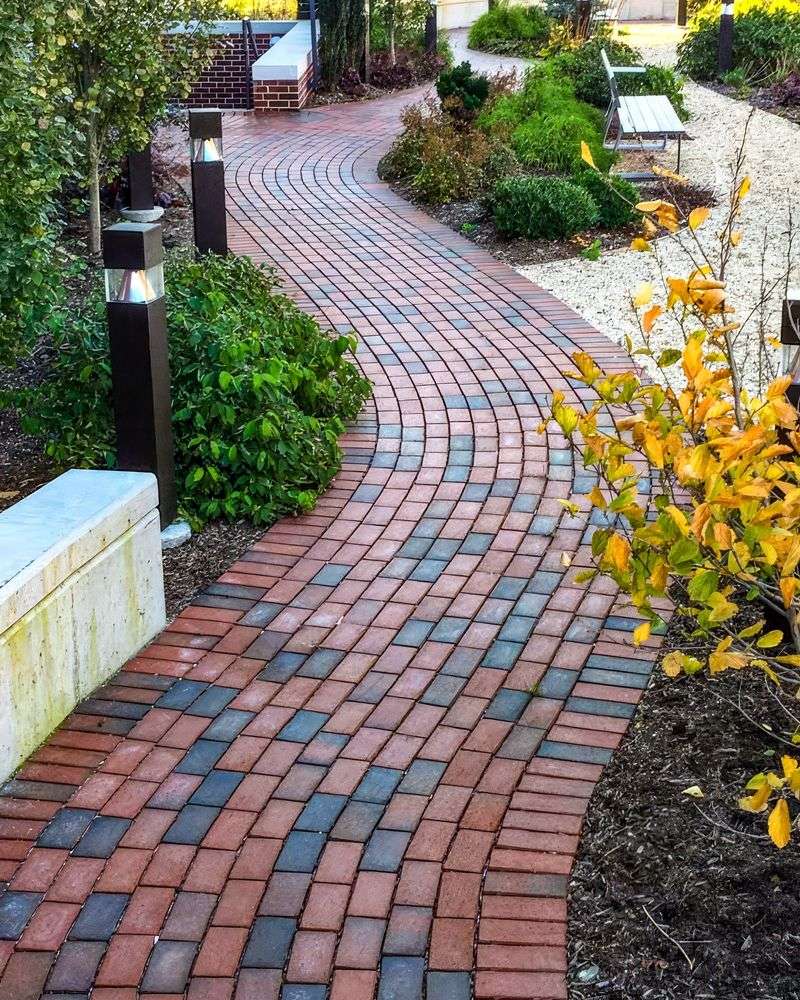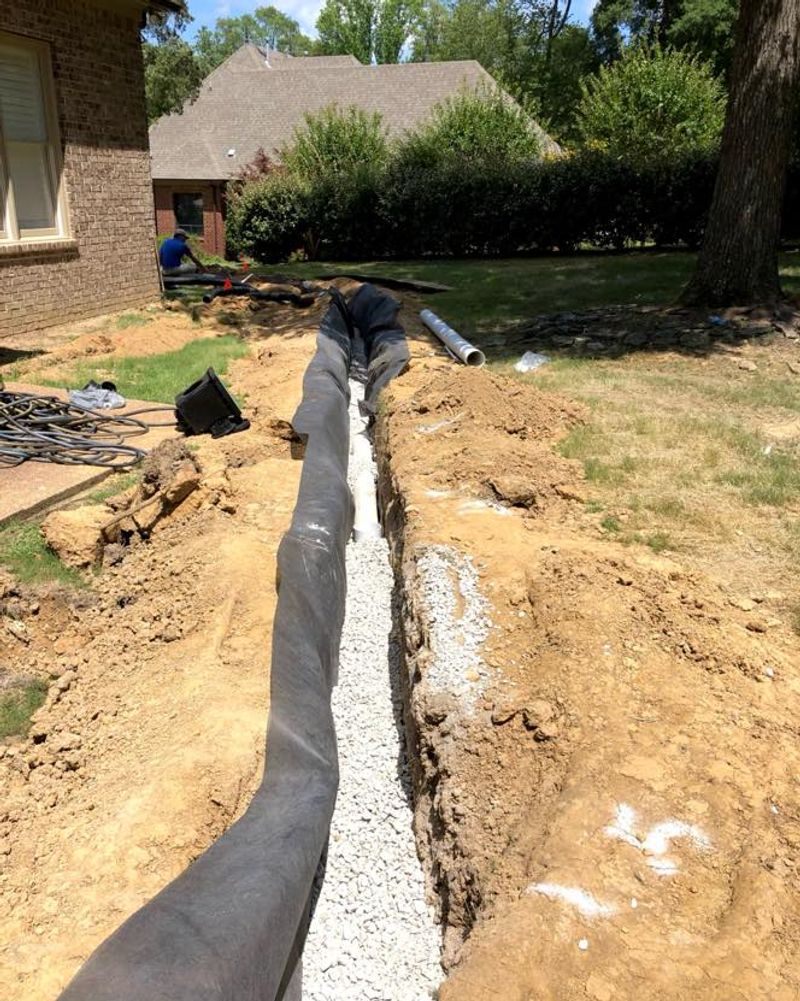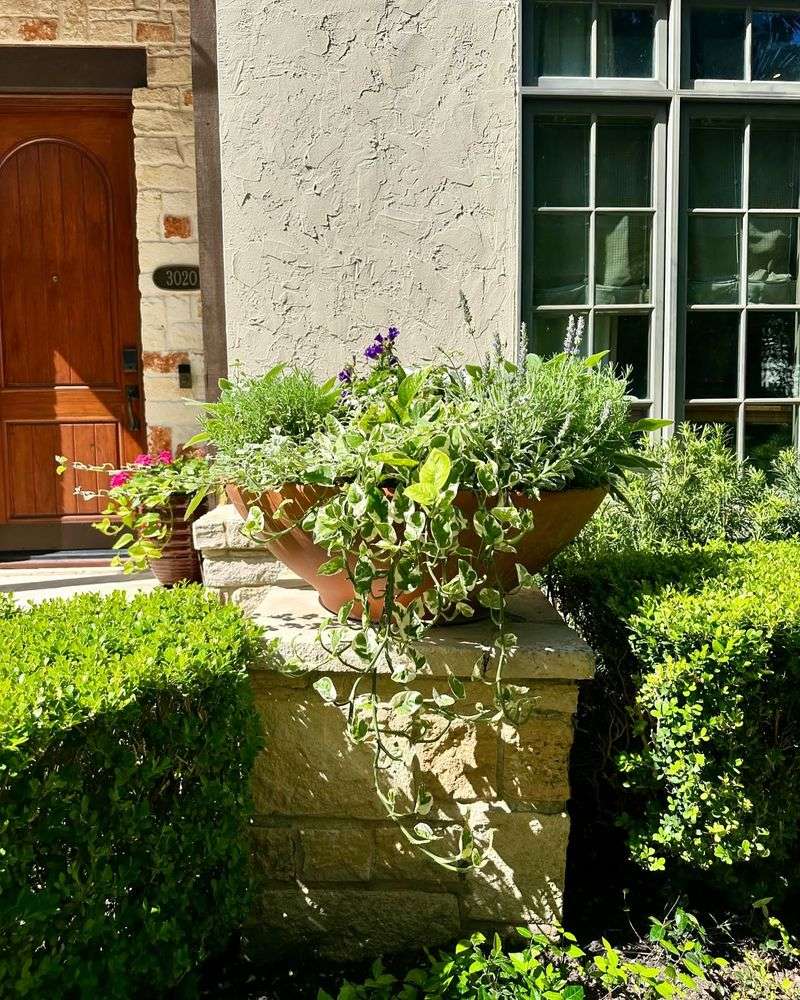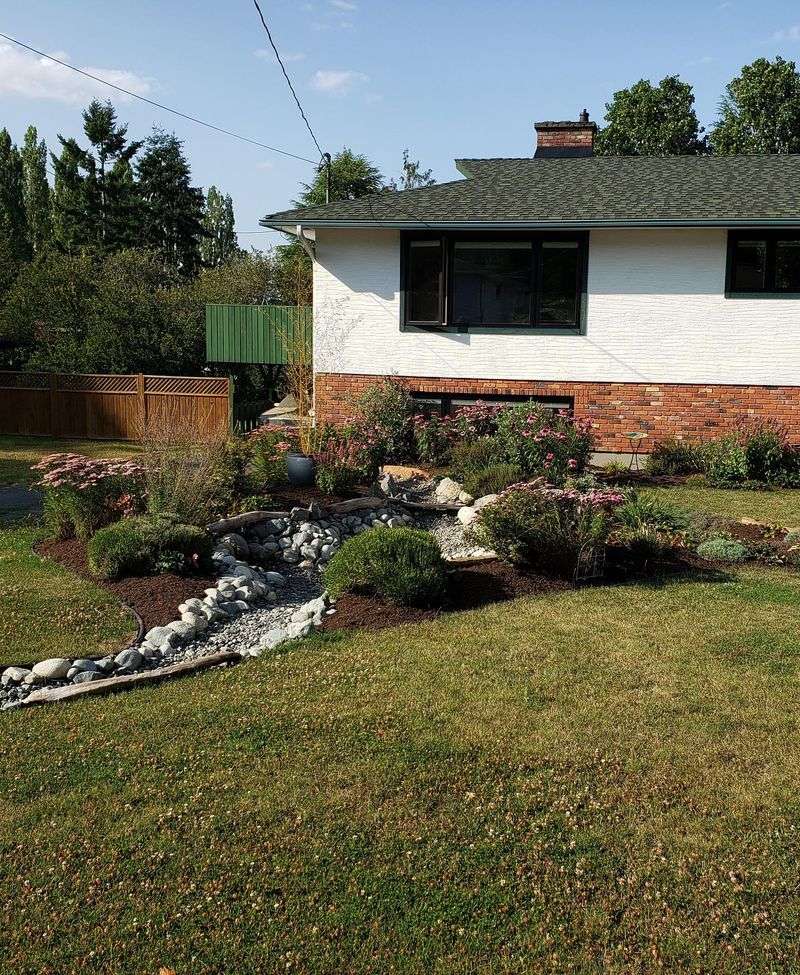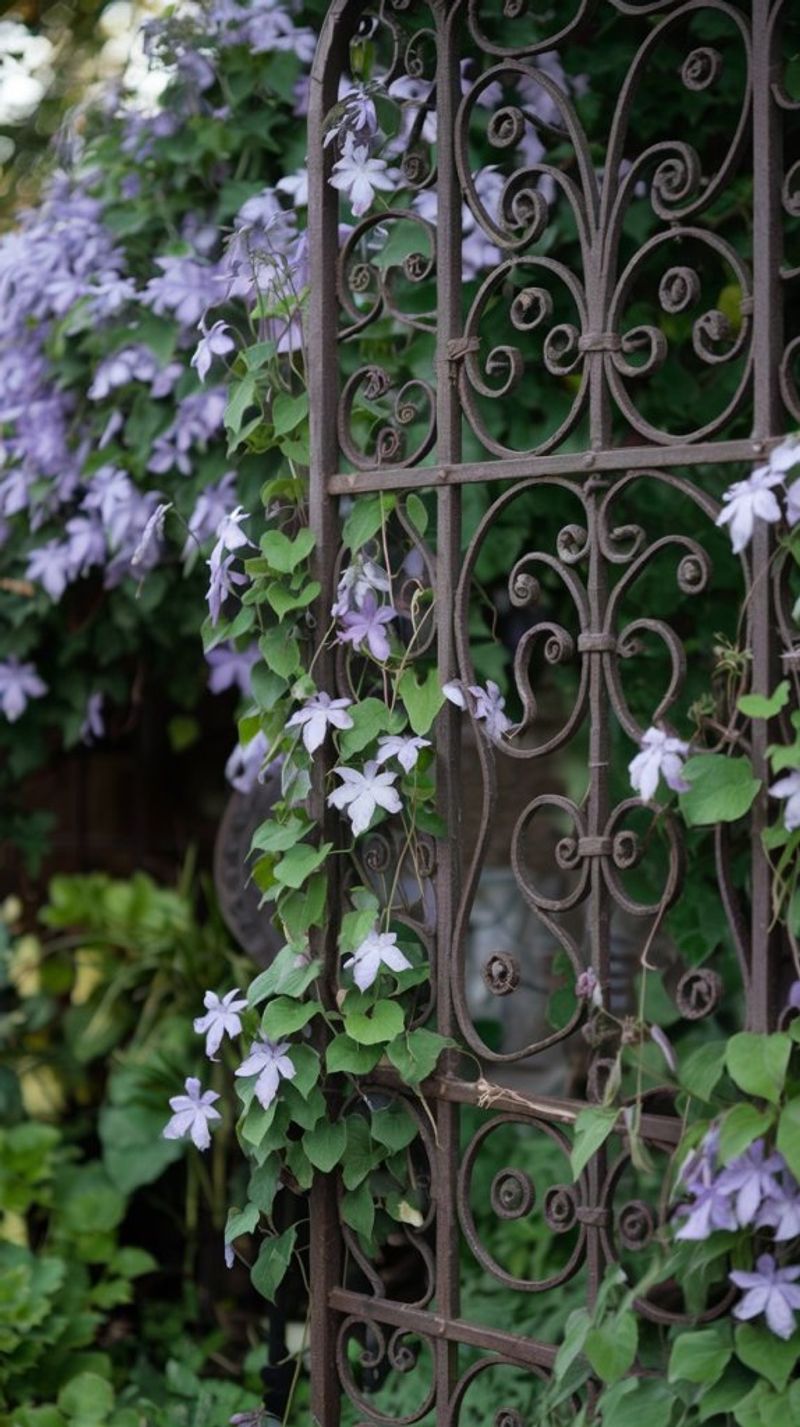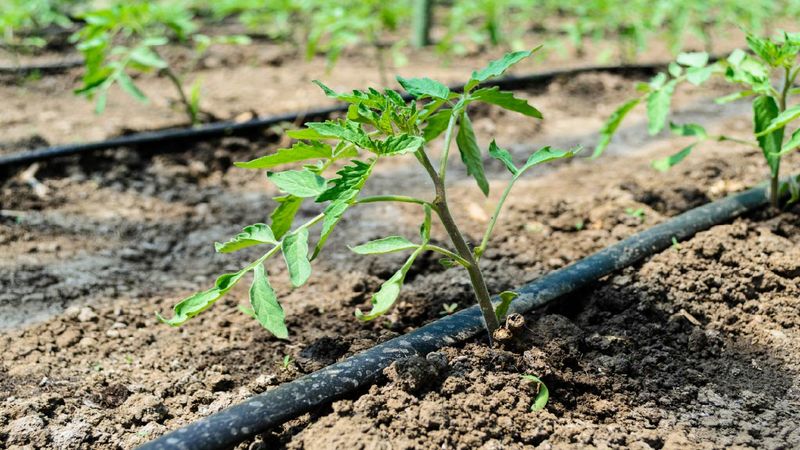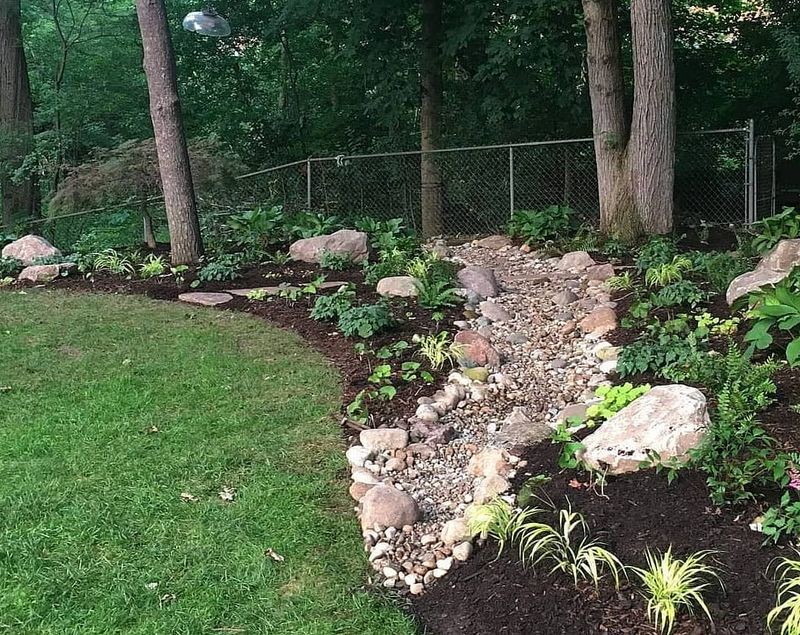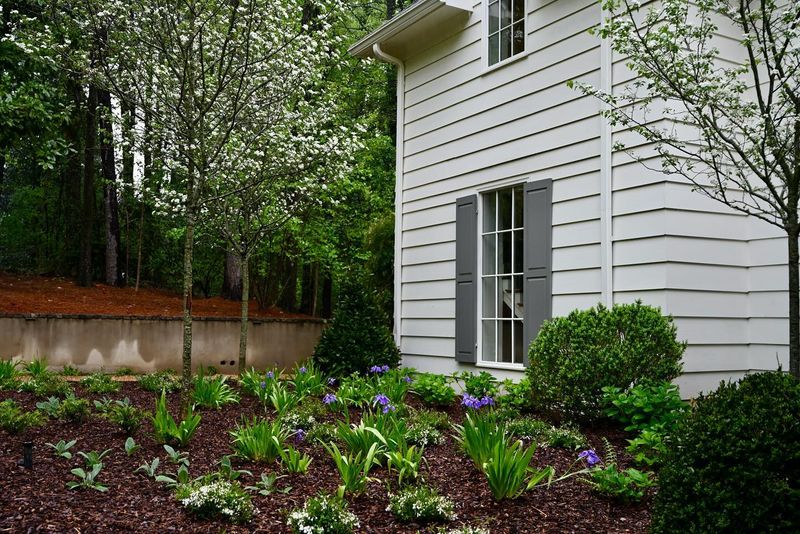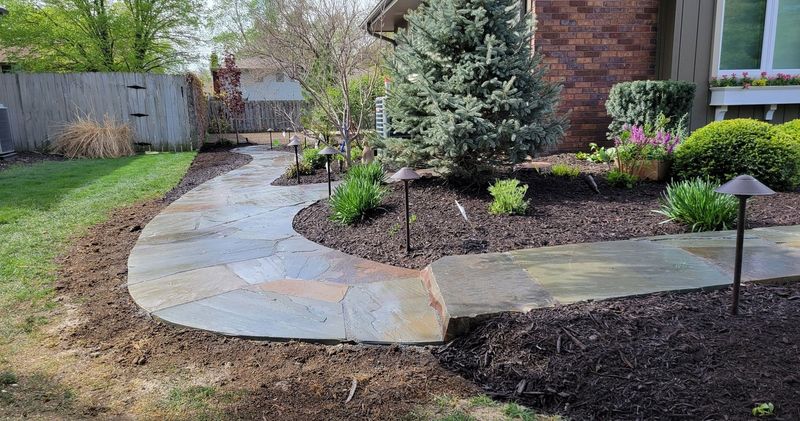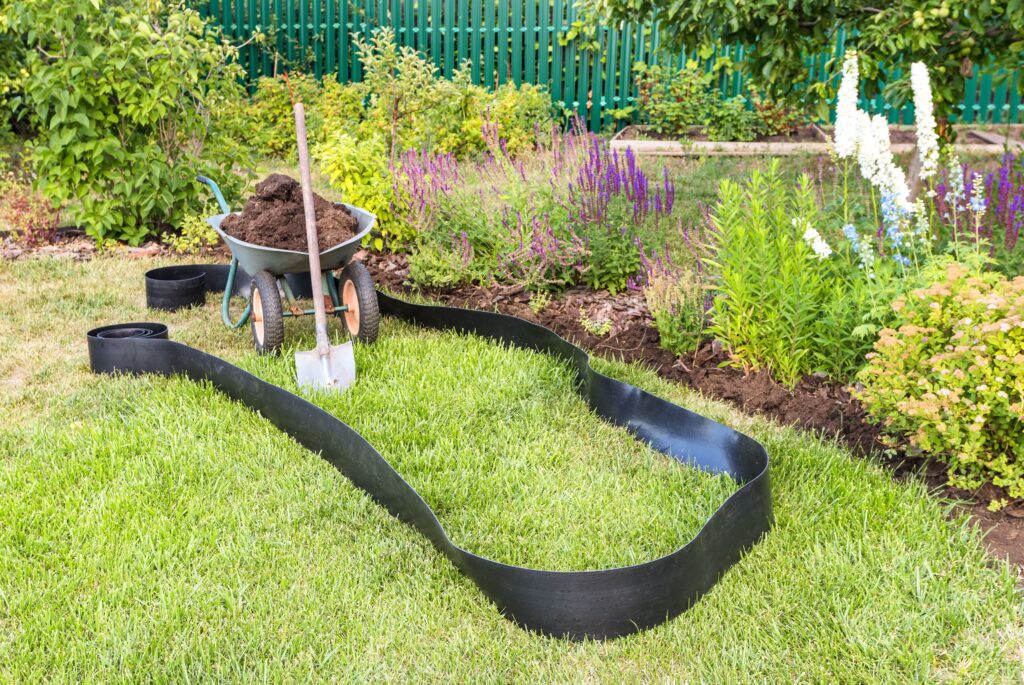Landscaping isn’t just about prettying things up — it’s also your home’s first line of defense. The wrong plant in the wrong place can wreak havoc on your foundation, siding, and peace of mind.
Take it from me: I once let a charming climbing hydrangea cozy up too close. It snuck under the siding, trapped moisture, and left me footing a repair bill that made my wallet weep.
Smart landscaping near your home keeps trouble at bay while still turning heads. Here are the best choices to keep your curb appeal high and costly damage low.
1. Low-Growing Ornamental Grasses
Ornamental grasses with compact growth habits make excellent foundation plantings. Unlike aggressive spreaders, varieties like blue fescue and Japanese forest grass stay small and manageable.
Their shallow root systems won’t threaten your foundation, and they provide year-round texture. I’ve found these grasses particularly useful in narrow spaces where other plants might crowd the house.
Most require minimal maintenance beyond an annual trimming, and they won’t hold moisture against your siding like denser shrubs often do.
2. Properly Spaced Dwarf Shrubs
Dwarf shrubs offer the beauty of traditional foundation plants without the risks. Varieties like ‘Little Henry’ sweetspire or compact boxwood naturally stay small, eliminating the need for constant pruning.
Plant these at least 2-3 feet from your foundation to allow for proper air circulation. During my landscape renovation last year, I replaced overgrown junipers with dwarf varieties, immediately improving airflow around my foundation.
The key is choosing truly dwarf varieties, not just young plants of larger species that will eventually outgrow their space.
3. Gravel Drainage Borders
A 12-18 inch gravel border between your foundation and planting beds creates a critical drainage zone. This simple addition prevents soil and mulch from direct contact with your siding while allowing water to move away from your foundation.
River rock or pea gravel works perfectly here. My neighbor installed this system five years ago and hasn’t had a single basement leak since, despite our area’s heavy rainfall.
For best results, dig a slight slope away from the foundation before adding landscape fabric and gravel.
4. Raised Planting Beds
Elevating your planting beds with proper retaining materials keeps soil and moisture away from your home’s exterior. These structures should be placed at least 6 inches from your foundation to prevent water transfer.
Brick, stone, or composite materials work well for these borders. When I built my raised beds, I made sure to incorporate drainage holes in the sides facing my house.
This approach not only protects your home but also creates defined garden spaces that add architectural interest to your landscape.
5. Drought-Tolerant Perennials
Plants that thrive with minimal watering make excellent choices near your home. Lavender, sedum, and yarrow don’t require frequent irrigation that might damage your foundation.
These hardy perennials look beautiful while minimizing moisture around your house. After switching to drought-tolerant plants near my foundation, I noticed much less dampness in my basement corners during rainy seasons.
As an added bonus, many of these plants attract beneficial pollinators while requiring less maintenance than thirstier alternatives.
6. Mulch-Free Zones
Creating a mulch-free zone immediately adjacent to your foundation prevents termites and moisture problems. Wood mulch holds water and attracts pests when placed directly against your home.
Instead, use the gravel drainage border mentioned earlier for the first 12-18 inches. Beyond that, you can safely use organic mulches in your planting beds. This approach has saved me countless headaches with wood-destroying insects.
If you prefer the look of mulch everywhere, consider inorganic options like rubber mulch or decorative stone near the foundation.
7. Shallow-Rooted Trees
When planting trees near your home, choose varieties with non-aggressive root systems. Japanese maples and many fruit trees have relatively contained root structures that won’t threaten your foundation.
Place even these safer options at least 15-20 feet from your house. After watching my parents deal with foundation damage from a too-close oak tree, I’ve become extra cautious about tree placement.
Small ornamental trees like dogwoods and redbuds offer beautiful flowering displays while posing minimal risk to your home’s structural integrity.
8. Proper Downspout Extensions
Landscaping safely includes managing water runoff properly. Extend downspouts at least 6 feet from your foundation, and consider decorative options that blend with your plantings.
Buried downspout extensions can be hidden beneath ground cover plants or mulch. The underground pipe I installed last spring directs water to a rain garden 15 feet from my house, solving a persistent wet spot issue.
For a more decorative approach, rain chains can replace traditional downspouts while directing water to appropriate drainage areas away from your foundation.
9. Permeable Hardscaping
Patios and walkways near your home should allow water to drain through rather than running toward your foundation. Permeable pavers, gravel, or spaced flagstones set in sand provide stable surfaces while allowing drainage.
These materials prevent water pooling against your foundation during heavy rains. My permeable brick patio has completely eliminated the puddles that used to form along my house during storms.
For added protection, ensure any hardscaping slopes gently away from your home at a rate of about 1/4 inch per foot.
10. Strategic Ground Cover Plants
Low-growing ground covers can replace grass in areas near your foundation where mowing is difficult. Creeping thyme, ajuga, and sedum varieties spread horizontally without growing tall enough to contact siding.
These plants stabilize soil while requiring minimal water. The creeping thyme I planted along my foundation path stays under 3 inches tall and provides lovely purple flowers each summer.
Choose varieties that match your climate zone and sun exposure for best results, and avoid aggressive spreaders that might become invasive.
11. French Drain Systems
For properties with water drainage issues, a French drain installed around your foundation perimeter provides excellent protection. This gravel-filled trench with perforated pipe directs water away from your home.
The system can be hidden beneath attractive plantings or decorative stone. When my sister’s basement kept flooding, installing a French drain solved the problem while allowing her to maintain her garden.
Professional installation is recommended for best results, though determined DIYers can tackle this project with proper research and equipment.
12. Container Gardens
Potted plants offer beauty without risking your foundation or siding. Large containers placed on paved surfaces near your home create instant impact while remaining completely movable.
Elevate pots on plant stands to prevent moisture transfer to your house. My collection of container-grown herbs and flowers brightens my foundation area without any of the risks associated with in-ground planting.
This approach also allows you to grow plants that might otherwise be too aggressive near your home, like mint or bamboo.
13. Rain Gardens Away From Foundation
Rain gardens capture runoff but should be positioned at least 10 feet from your foundation. These planted depressions collect water that would otherwise flow toward your house.
Native plants that tolerate both wet and dry conditions work best in these areas. The rain garden I installed last year not only solved my drainage issues but also attracts beautiful butterflies and birds.
Connecting downspout extensions to your rain garden creates an integrated water management system that protects your foundation while supporting local wildlife.
14. Non-Invasive Vines On Trellises
If you love the look of climbing plants, install a freestanding trellis at least 2 feet from your siding. This allows for air circulation while preventing direct contact between vines and your home.
Clematis, jasmine, and annual vines like morning glory are safer choices than aggressive climbers. After my bad experience with climbing hydrangea, I switched to a beautiful clematis on a cedar trellis set away from my house.
Regular pruning keeps these plants in check while maintaining their ornamental value.
15. Proper Irrigation Placement
Irrigation systems should direct water away from your foundation, not toward it. Position sprinkler heads and drip lines to avoid spraying your home’s exterior.
Smart controllers that adjust based on rainfall prevent overwatering. When I redesigned my irrigation system, I made sure all spray patterns ended at least 2 feet from my foundation.
Drip irrigation delivers water directly to plant roots, reducing overall moisture near your home while still keeping your landscape healthy.
16. Rock Gardens And Succulents
Rock gardens featuring succulents and alpine plants create attractive, low-maintenance areas near your foundation. These plants require minimal water, reducing moisture concerns around your home.
Decorative stone and gravel provide excellent drainage. The small rock garden I created along my south-facing foundation wall has thrived for years with almost no attention, even during our hot summers.
For best results, incorporate larger decorative stones among the plantings to create visual interest throughout the seasons.
17. Foundation-Friendly Native Plants
Native plants adapted to your local conditions often have growth habits that work well near foundations. Many prairie plants and native shrubs have compact root systems that won’t threaten your home.
These plants typically require less water once established. The native butterfly weed and little bluestem I planted along my foundation have remained perfectly sized without any pruning for three years now.
Check with your local extension office for native plant recommendations specific to your region and soil conditions.
18. Stepping Stone Pathways
Creating stepping stone paths along your foundation provides access for home maintenance while preventing soil compaction. Space stones slightly apart to allow water infiltration between them.
This approach maintains a clean, accessible zone around your home. The flagstone path I installed makes inspecting my foundation and cleaning gutters much easier than navigating through plants.
For added interest, plant low-growing thyme or moss between stones to create a living pathway that still provides solid footing.
19. Decorative Edging With Proper Spacing
Installing decorative edging between your planting beds and foundation creates a clean transition while keeping soil and mulch from creeping too close to your home. Concrete, metal, or composite edging holds materials in place and prevents buildup near your siding.
I added low-profile steel edging around my front beds last spring, leaving a 6-inch buffer between the edge and the foundation. Not only did it give my landscape a tidy, professional look, but it also helped maintain airflow and reduce moisture near the house.
Choose edging materials that complement your home’s exterior and install them level with the ground to avoid trip hazards while still offering a functional barrier.

